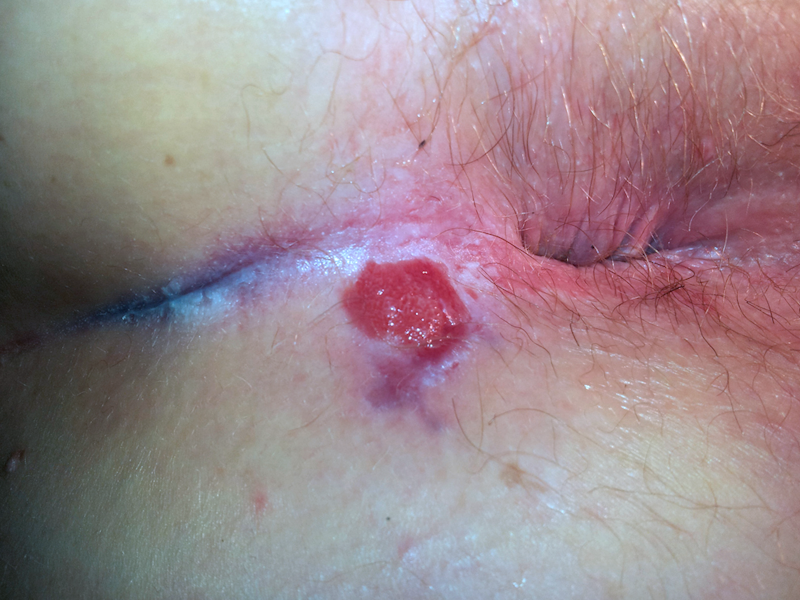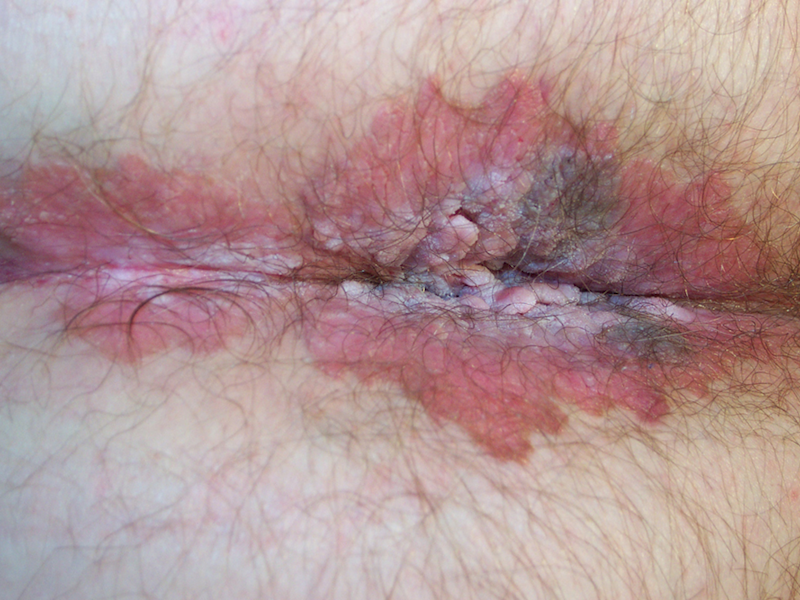What is it?
Anal intraepithelial neoplasia (AIN) is a premalignant condition caused by persistent infection with high risk types of HPV.
Risk factors include HPV infection, receptive anal intercourse, HIV infection and immunosuppression.
AIN is graded as:
- AIN I - Low grade ASIL or LSIL. Considered mild dysplasia.
- AIN II - Moderate dysplasia. Considered high grade ASIL or HSIL.
- AIN III - Severe dysplasia/carcinoma in situ. Considered high grade ASIL or HSIL.
It remains controversial about the regression and progression rates towards anal cancer (unlike with CIN and cervical cancer with clear research demonstrating progression).
Some believe there is also a linear progression from AIN I > II > III > cancer although this is not universally accepted.
Clinical presentation
An irregular, ill-defined, violaceous area which may be ulcerated and is often associated with concurrent warts.
Red flags:
- Any chronic lump or ulcer in an area of perianal warts
- Any atypical lesion, particularly if it appears violaceous or is refractory to treatment
- Any suspicious area in a patient who is immunosuppressed
Warning
May contain graphic images of human anatomy, medical conditions and medical procedures. Viewing discretion is advised.
Anal intraepithelial neoplasia
Management
- Management remains controversial as there is no clear evidence whether we should be treating AIN or not.
- Some will advocate for ablation with minimally invasive methods (such as imiquimod cream, photodynamic therapy or infrared coagulation).
- Others choose to monitor 6 - 12 monthly (history, examination, proctoscopy with excisional biopsy of any new lesions)


